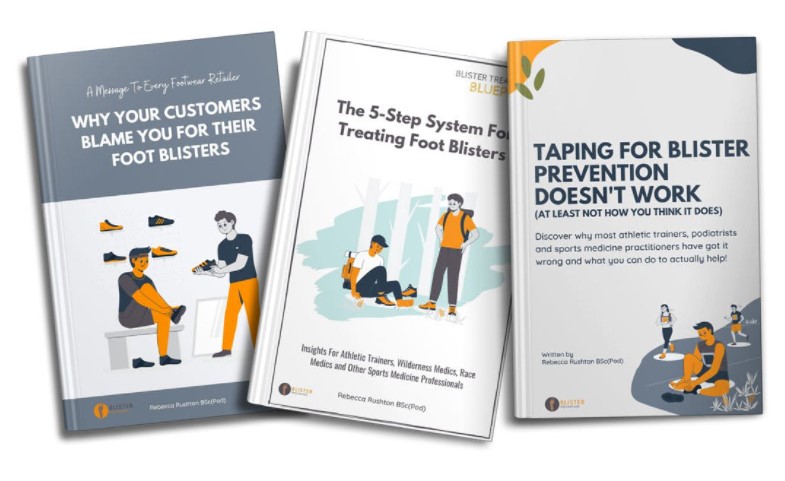What does foot moisture management mean to you, in terms of blister prevention? Is that even possible, when our feet are wrapped up in socks and shoes, and we’re exercising. Let alone in the heat of summer.
All moisture-management strategies are aiming to keep the skin drier. Dry skin means lower skin friction force. Do you understand the significance of that, though? It means it’s more slippery between the skin and sock. This results in a lower magnitude of soft tissue shear deformation, because the skin is able to move in sync with the underlying bone at an earlier moment in time with each shear distortion.
Watch the video to see exactly where foot moisture management strategies sit in relation to all other blister preventions.
Dry skin = lower skin friction
Summer heat +/- exercise = sweatier feet = higher skin friction = more blisters
In this video, we look closer at the following moisture management strategies:
💧 STRATEGY 1: Change out of wet socks/shoes
💧 STRATEGY 2: Moisture-wicking socks
💧 STRATEGY 3: Ventilated shoe uppers
💧 STRATEGY 4: Toesocks (interdigital blisters only)
💧 STRATEGY 5: Antiperspirants
💧 STRATEGY 6: Astringents
💧 STRATEGY 7: Powders
💧 A word on maceration
Are our feet ever truly dry – dry enough to mean low friction?
Is the skin ever truly DRY when it is covered by socks, wrapped in shoes, exercising, in hot / humid weather? Probably not. So, what can you do? Move on to a strategy that that reduces friction levels irrespecitive of how damp, clammy and wet the skin is. And/or find a better blister prevention strategy specific to the anatomical location. To find out how, join Blister Prevention University 🎓
Blister Prevention Office Hours Q&A
QUESTION 1: Cork (Birkenstocks) vs rubber thongs? Best footwear for prone blister people
QUESTION 2: What type of dressing to use on open blisters to prevent ulceration in diabetic patients?
QUESTION 3: What products to use and treatments to either aspirate or irrigate foot blisters?
QUESTION 4: To lance blisters or not to lance?



